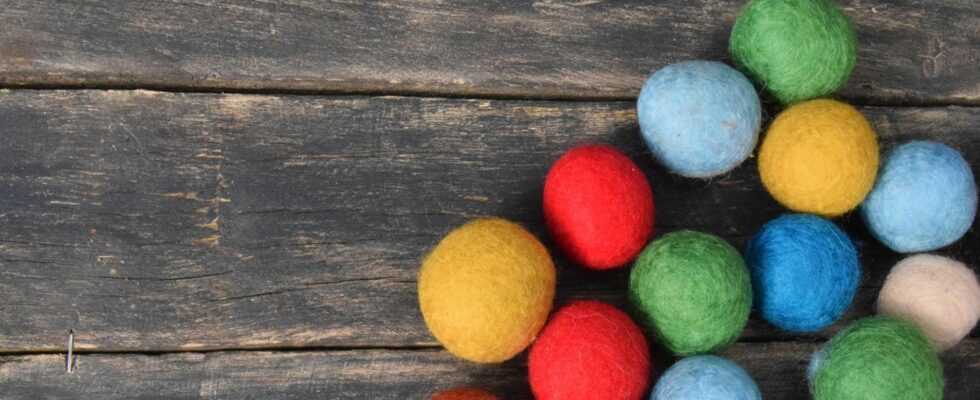Felting with children
This is how you make felt balls
© Elsa Trone / Shutterstock
Felting is a technique that children can already master! Get to work with colorful felt wool, soap and warm water. Here we explain what you have to consider when felting with children and which project you can start with.
Difference: wet felting vs. dry felting
There are two different felting techniques: wet felting and dry felting. Dry felting requires a felting needle that is equipped with small barbs and is repeatedly pricked into the felting wool. As a result, the felting wool gets caught and ultimately felts. The felting needle is very sharp and may pose a risk of injury for children. That is why you should only wet felt with children.
Felting with children: That’s what makes felting special!
Wet felting encourages children’s senses: wool is soaked in warm soapy water and then rubbed until a firm felt is formed. The warm water, the haptic experience of the material and the colorful felt wool, which can be put together to form creative figures, make this technique so exciting for children! This creates a creative process that never gets boring. Therefore, felting with children is a great thing, especially as a leisure activity, which can easily take a few hours.
Felting with children: You should pay attention to this!
- Prepare the crafting site to protect your table: Lay down a plastic tablecloth or other waterproof surface. Towels are placed on top to soak up the water.
- Warm water is needed for felting: Make sure the water isn’t too hot, otherwise your children could burn themselves.
- Soapy water is necessary for wet felting: This is best made from olive oil soap or sheep’s milk soap, which you add to the warm water with a grater. These soaps are gentle on the skin and you don’t need to worry about dangerous chemical ingredients.
- Only use high-quality felting wool: Colorful fleece wool is easy to felt and makes it easier for children to get started with the technique.
- Don’t leave your kids unattended while they’re felting!
What happens when felting?
The woolly hair is surrounded by a cuticle layer that wraps around the hair like a pine cone. Because of the warm, soapy water and the friction exerted by the hands when felting, this cuticle rises up and catches with the cuticles of other wool hairs. This creates a solid felt that keeps contracting.
Wet felting with children: This is how a felt ball is made
Felting a ball is very easy and is therefore one of the simple techniques that can be tried out well with children.
You need:
- felt wool (colorful fleece wool)
- soap (olive soap)
- plastic tablecloth
- towels
- key
- water heater
- vinegar
Instructions:
- Lay out a plastic tablecloth and towels.
- Grate some soap into a bowl and fill it with warm water. Distribute the soap well so that everything foams.
- Pluck off part of the fleece wool and pull apart the edge well.
- The wool is now placed in the palm of the hand and wetted in the middle with soapy water.
- Now you can form a ball out of it with both hands.
- Wet the ball again with soapy water and rub it evenly all over with both hands.
- Keep using soapy water to wet the ball and increase the pressure on the felt object. This gradually creates a solid ball.
- You can increase the size by repeatedly wrapping a thin layer of felt wool around the ball and felting with water.
- Once the ball has reached the right size and firmness, rinse it out with clear water and briefly dip it in vinegar. The vinegar will neutralize any soap residue. Then rinse the felt ball out again and lay it on a towel to dry.
What can you do with a felt ball?
A chain can be made from lots of colorful felt balls: Simply thread the balls onto nylon cord with a needle.
With an acorn hat, the balls become a colorful table decoration.
Imaginative mobiles can be made from the colorful balls.
Are you looking for more creative techniques to try with your kids? Here you can find out everything about painting with children, batiks or potato printing.

